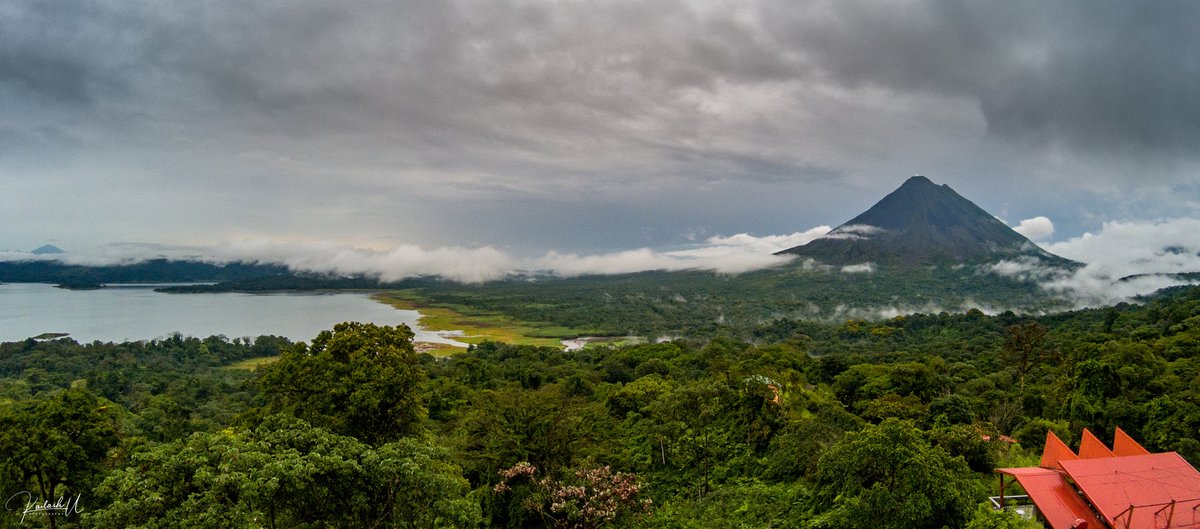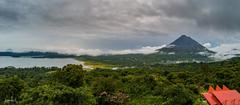
Lake Arenal Visiting Hours, Tickets, and Travel Guide — Tilarán Canton, Costa Rica
Date: 14/06/2025
Introduction to Lake Arenal: History, Culture, and Visitor Experience
Nestled in Costa Rica’s verdant northern highlands, Lake Arenal is a destination where breathtaking natural beauty, rich cultural heritage, and sustainability converge. Located in Tilarán canton, the area is dominated by the iconic Arenal Volcano, which—though dormant since 2010—continues to shape the landscape and local identity. The expansive freshwater lake, created by the construction of the Arenal Dam in the late 1970s, is now the largest in Costa Rica, offering a haven for adventure, relaxation, and ecological discovery.
Visitors can immerse themselves in a diverse array of activities: windsurfing on the lake’s famed winds, hiking through lush rainforests in Arenal Volcano National Park, birdwatching among hundreds of species, and connecting with communities whose stories reflect resilience and adaptation. Lake Arenal also plays a vital role in Costa Rica’s renewable energy efforts, serving as the primary hydroelectric reservoir that powers much of the nation.
Balancing tourism, conservation, and energy production, Lake Arenal exemplifies sustainable regional development. Whether you’re drawn by the thrill of adventure sports, the serenity of hot springs, or the rich biodiversity, this guide provides all the essential information for planning your visit.
For detailed visitor information and sustainable travel advice, see Costa Rica Travel Guide, Arenal Volcano National Park official site, and mag506.com’s story of Lake Arenal.
Table of Contents
- Introduction
- Historical Background
- Hydroelectric Power and Sustainability
- Socio-Environmental Transformation and Community Resettlement
- Ecotourism and Economic Development
- Biodiversity and Conservation
- Cultural and Educational Impact
- Visiting Lake Arenal: Practical Information
- Lake Arenal Attractions and Activities
- Getting There and Transportation
- Weather, Packing, and Essentials
- Accommodation and Dining
- Safety and Health
- Money, Connectivity, and Services
- Accessibility and Etiquette
- Booking and Reservations
- Sustainable Travel
- Emergency Contacts
- FAQs
- Conclusion
- References
Historical Background
Pre-Colonial and Early History
The Lake Arenal region, spanning the Guanacaste and Alajuela provinces, was home to indigenous peoples who thrived amid forests, rivers, and volcanic terrain. The Arenal and Chato volcanoes were central to local mythology and influenced settlement patterns, with communities adapting their livelihoods to the cycles of nature (CostaRica21.com).
The Arenal Volcano: Dormancy and Eruption
Arenal Volcano, a classic stratovolcano, was dormant for centuries before a dramatic eruption on July 29, 1968, devastated villages such as Tabacón and Pueblo Nuevo. This event sparked decades of continuous volcanic activity, transforming the region into a hub for scientific study and eco-tourism (MuchBetterAdventures.com).
Creation and Expansion of Lake Arenal
Prior to the 1970s, Lake Arenal was a modest natural lake. In 1979, the construction of the Arenal Dam by ICE (Instituto Costarricense de Electricidad) tripled its size, creating an 85-square-kilometer reservoir and submerging the original towns of Arenal and Tronadora (LakeArenalProperties.com; TicoTimes.net).
Hydroelectric Power and Sustainability
Lake Arenal is Costa Rica’s largest hydroelectric reservoir, vital for the country’s renewable energy matrix. The Arenal Hydroelectric Plant, inaugurated in 1979, is key to Costa Rica’s ability to generate over 98% of its electricity from renewable sources. Its unique design allows for water storage and strategic release, stabilizing electricity supply year-round (mag506.com; TheCostaRicaNews.com). The plant also supports the Arenal–Tempisque Irrigation System, essential for agriculture in the region.
Socio-Environmental Transformation and Community Resettlement
The creation of the reservoir required relocating Arenal and Tronadora’s populations. This resettlement is internationally recognized as a model for balancing development with social responsibility, emphasizing continuity of community and economic life (TheCostaRicaNews.com).
Ecotourism and Economic Development
Lake Arenal’s dramatic scenery and proximity to Arenal Volcano have made the region a hub for sustainable tourism. Visitors enjoy world-class windsurfing, sailing, kayaking, boat tours, wildlife watching, and fishing (mag506.com; CostaRica.org). The tourism boom supports local economies and fosters eco-friendly development (AllWorld.com).
Biodiversity and Conservation
Lake Arenal and its environs form part of the Arenal Tilarán Conservation Area, a biodiversity hotspot. The region’s rainforests, wetlands, and lake habitats support sloths, monkeys, jaguars, deer, and hundreds of bird species (AllWorld.com). Conservation efforts, particularly within Arenal Volcano National Park, ensure protection of these ecosystems (CostaRica.org).
Cultural and Educational Impact
Lake Arenal’s story is a symbol of Costa Rica’s commitment to sustainability and environmental stewardship. Educational programs and exhibitions in Tilarán highlight the interplay between renewable energy, community resilience, and conservation (mag506.com; TheCostaRicaNews.com).
Visiting Lake Arenal: Practical Information
Visiting Hours and Tickets
- Lake Arenal: Open year-round, no entrance fee. Most activity operators run from 8:00 AM to 5:00 PM.
- Arenal Volcano National Park: Open daily, 8:00 AM–4:00 PM. Adults $15 USD; children $5 USD (SINAC). Tickets available onsite or online.
- Hot Springs: Varied hours, typically early morning to late evening; prices $20–$60 USD.
Accessibility
Main trails at the national park are moderately accessible; some lakeside and boat activities accommodate wheelchairs (confirm with providers in advance).
Best Times to Visit and Weather
- Dry Season (December–April): Best for outdoor activities and volcano views; peak tourist season.
- Rainy Season (May–November): Lush scenery, fewer crowds; afternoon showers common (LaidBackTrip).
Packing Essentials
- Lightweight, quick-dry clothing
- Rain gear (wet season)
- Sun protection (hat, sunscreen, sunglasses)
- Swimwear
- Hiking shoes
- Insect repellent
- Light jacket for evenings (EnterCostaRica)
Lake Arenal Attractions and Activities
Arenal Volcano National Park
- Trails: Las Coladas and El Ceibo, offering views of lava flows and biodiversity (CostaRicaRios.com).
- Guided hikes: Recommended for geology and wildlife insight.
- Note: Climbing the volcano itself is prohibited for safety.
Water Sports & Scenic Cruises
- Windsurfing and Kitesurfing: Ideal conditions November–April, with rentals and lessons available.
- Kayaking, SUP, Canoeing: Explore coves and wildlife.
- Boat Tours: Panoramic lake and volcano views; sunset cruises popular (CRIE).
Adventure Activities
- Ziplining: Canopy tours above the rainforest (VisitNuevoArenal).
- Canyoning and Rafting: Río Balsa and Río Sarapiquí offer routes for all skill levels.
Hiking and Biking
- Trails: Around the lake and in El Castillo; wildlife viewing opportunities.
- Mountain Biking: Rentals and guided tours in Nuevo Arenal and La Fortuna.
Birdwatching and Wildlife
- Over 300 bird species, including toucans and motmots.
- Mammals include sloths, monkeys, and armadillos.
- Night tours for nocturnal wildlife (VisitNuevoArenal).
Hot Springs and Wellness
- Numerous resorts and public springs, especially near La Fortuna.
- Open year-round; check specific hours (CostaRicaRios.com).
Fishing and Local Cuisine
- Renowned for guapote (rainbow bass); guided tours available (CRIE).
- Local sodas and restaurants offer Costa Rican and international fare; try the Caballo Negro Restaurant in Nuevo Arenal (EnterCostaRica).
Cultural and Community Experiences
- Towns such as Nuevo Arenal and Tilarán offer markets, artisan shops, and cultural events.
- Tours of sustainable farms and coffee plantations available (CRIE).
Scenic Drives and Viewpoints
- Drive Route 142 for panoramic lake and volcano views.
- Wind farms and hydroelectric dam visible along the way (Quatro Legal).
Getting There and Local Transportation
- Airports: Liberia (LIR) – 1.5 hrs; San José (SJO) – 3.5 hrs (Monte Terras).
- Car Rental: Recommended for flexibility; 4WD advised in rainy season (CostaRica.org).
- Shuttles: Shared/private options connect major cities and airports.
- Local Transport: Buses and taxis available but less frequent; organized tours common.
Accommodation and Dining
- Where to Stay: Range from lakeside eco-lodges and B&Bs to luxury resorts (Nomadic Matt).
- Dining: Local sodas offer traditional cuisine; international options in Nuevo Arenal.
Safety and Health
- Costa Rica is generally safe, but use standard precautions (secure valuables, avoid isolated areas at night).
- Tap water is usually safe; bottled water available.
- Insect repellent recommended, especially in the wet season (LaidBackTrip).
Money, Connectivity, and Local Services
- Currency: Costa Rican colón (CRC); US dollars widely accepted.
- ATMs: In Tilarán and La Fortuna.
- Connectivity: Good Wi-Fi and mobile coverage in towns.
Accessibility and Local Etiquette
- Some hotels/attractions accessible, but hilly terrain poses challenges—check with providers.
- Costa Ricans are friendly; a simple “¡Buenos días!” is appreciated.
Booking and Reservations
- Peak season (Dec–April): Book accommodations/tours in advance, especially for lake/volcano views (CostaRica.org).
Sustainable and Responsible Travel
- Support certified eco-friendly lodges and operators.
- Respect wildlife and practice Leave No Trace principles (Copa de Arbol).
Emergency Contacts
- Tourist Police: 911 (nationwide)
- Hospitals: Tilarán and La Fortuna
- Tourist Info: Available at hotels and tour operators
Frequently Asked Questions (FAQ)
Q: What are the visiting hours for Lake Arenal and Arenal Volcano National Park?
A: Lake Arenal is accessible year-round; Arenal Volcano National Park is open daily from 8:00 AM to 4:00 PM.
Q: Do I need tickets for Lake Arenal?
A: No tickets for the lake, but parks and hot springs have entrance fees.
Q: What are the best times to visit?
A: Dry season (Dec–April) for outdoor activities; rainy season (May–Nov) for lush scenery.
Q: Is the area accessible for people with limited mobility?
A: Some accommodations and tours are accessible; check with providers due to hilly, uneven terrain.
Q: Is it safe to swim in Lake Arenal?
A: Yes, but always follow local safety advice and check weather conditions.
Conclusion and Final Tips
Lake Arenal and Tilarán canton showcase the union of spectacular scenery, cultural legacy, and sustainable innovation. From ancient indigenous roots and volcanic drama to pioneering renewable energy and thriving eco-tourism, the area offers enriching experiences for all travelers. Whether exploring trails, relaxing in hot springs, or engaging with welcoming communities, Lake Arenal is a must-see jewel in Costa Rica’s landscape.
For the latest updates on visiting hours, tickets, and tours, download the Audiala app. By choosing Lake Arenal, you support a region dedicated to conservation and community. Plan your adventure and discover why Lake Arenal stands as a beacon of Costa Rica’s natural and cultural wonders (Costa Rica Experts; TheCostaRicaNews.com).
References
- CostaRica21.com
- MuchBetterAdventures.com
- LakeArenalProperties.com
- TicoTimes.net
- mag506.com
- TheCostaRicaNews.com
- CostaRicaRios.com
- CRIE
- CostaRica.org
- LaidBackTrip
- VisitNuevoArenal.com
- SINAC
- ArenalVolcanoCostaRica.com
- MonteTerras.com
- CostaRicaExperts.com
- NomadicMatt.com
- CopaDeArbol.com
- Budget.co.cr
- ChampionTraveler.com
- Quatro.Legal
- EnterCostaRica.com



